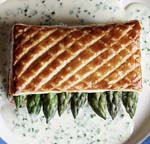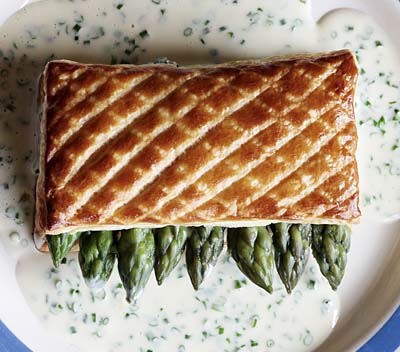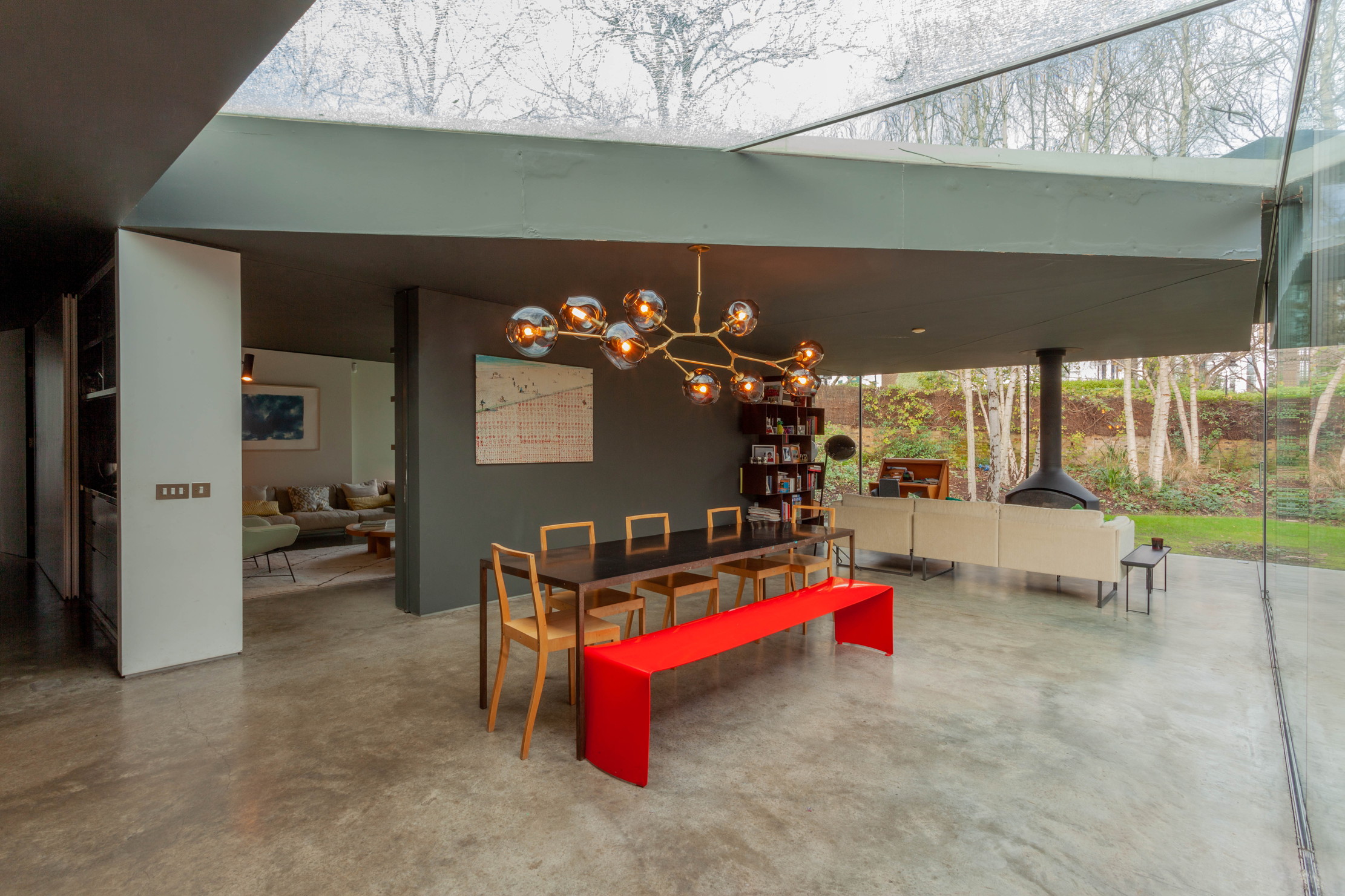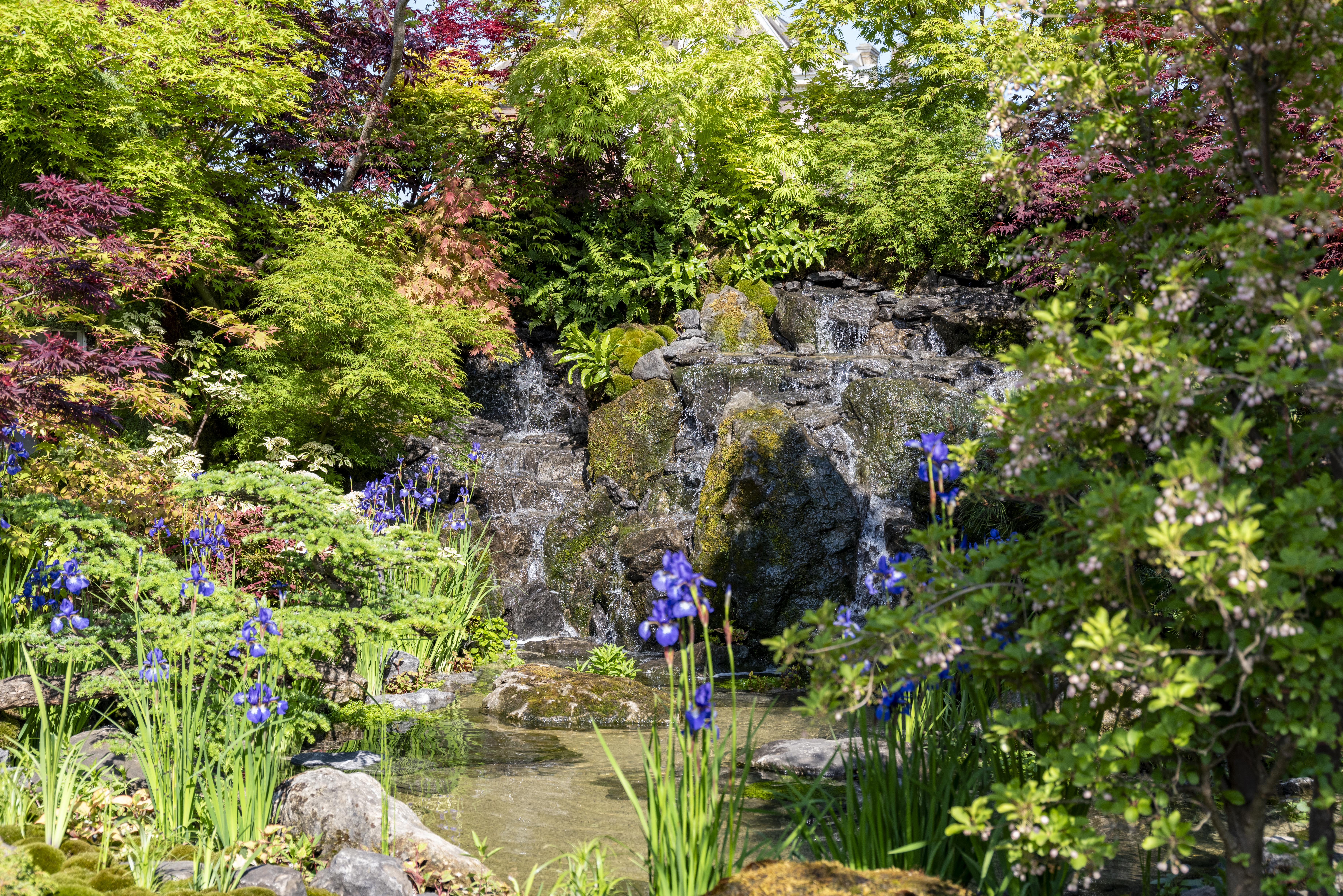Simon Hopkinson cooks asparagus
New Country Life chef Simon Hopkinson cooks asparagus with a mustard vinaigrette and asparagus in puff pastry


Boiled asparagus with a mustard vinaigrette
Allow about five to six large spears per serving-or more, if asparagus is all you're eating. As I always prefer asparagus peeled, I try to find nice big, fat spears. First, cut off any tough stalk at the base of the spears and even up their lengths. Using a potato peeler, remove the skin from about 4cm below the tip, and continue in long strokes until you reach the base (keep the peelings and stalks for making delicious soup).
Cook the asparagus at a rolling boil for about 5-6 minutes, or until tender when pierced with a small, sharp knife; there's nothing worse than undercooked asparagus that crunch when you bite them. Carefully lift them out with a slotted spoon and drain on a tea towel. Serve at once, piled on a napkin laid on a handsome dish. Eat with the following creamy vinaigrette. Ingredients
2tbsp smooth Dijon mustard 2tbsp white-wine or (even better) tarragon vinegar Salt and pepper A little lukewarm water 200ml sunflower oil 125ml finest olive oil Squeeze of lemon juice (optional)
Method
Put the mustard, vinegar, seasoning and a couple of tablespoons of the water in a blender (best) or small food processor. Whizz until smooth, and then start adding the oils in a thin stream with the motor running. When the consistency is becoming thick and creamy, have a taste and add a little more water. Continue until the final consistency is almost that of salad cream. Add lemon juice now, if you like, and correct seasoning. Any leftover vinaigrette keeps well in the fridge.

Asparagus in puff
Sign up for the Country Life Newsletter
Exquisite houses, the beauty of Nature, and how to get the most from your life, straight to your inbox.
pastry with a chive-butter sauce Serves 4, as a first course
As chervil is all too often a difficult herb to come by, I've used chives here instead. I always use the excellent Dorset Pastry Limited's puff pastry (www.dorsetpastry.co.uk).
Ingredients
200g ready-rolled puff pastry, cut into 4 rectangles 1 beaten egg 24 slender asparagus spears (not big and fat, as before), trimmed and peeled Salt and freshly ground white pepper 1tbsp white-wine vinegar 3tbsp vermouth 3-4tbsp double cream 75g cold, unsalted butter, cut into small cubes 1tbsp finely snipped chives
Method
Pre-heat the oven to 200˚C/gas mark 6. Place the rectangles of puff pastry on a greased baking sheet. Lightly brush with egg and then, if you wish, decorate with a criss-cross pattern using the point of a small, sharp knife. Slide into the oven and bake for about 25 minutes, or until well risen, golden and puffed. Switch off the heat, open the oven halfway and allow the pastry to dry out slightly, but remain warm.
Put the asparagus in a shallow pan and only just cover with boiling water from a kettle; note that this goes against my earlier insistence of plenty of boiling water for cooking asparagus, but the water here goes towards making the sauce, so needs an intense flavour. Add very little salt, then boil the asparagus until tender. Lift out with a fish slice, say, and keep warm.
Add the vinegar and vermouth to the asparagus cooking water, then rapidly reduce over a high heat until about a couple of tablespoons remain. Add the cream, bring to a simmer, then whisk in the butter bit by bit until fully amalgamated. Season with salt (if necessary) and pepper, stir in the chives and keep the sauce warm.
To assemble, horizontally slice the four cooked pastries in two and place a bottom slice onto four warmed plates. Cut the spears into tips that will eventually fit the pastry rectangles in a row, with their tips peeking out of their longer edge. Finely chop the remaining stems of the cooked asparagus and fill the bases with them. Carefully lay the asparagus tips on top, gene-rously spoon the sauce over and pop a golden pastry top on each. Serve without delay.
to Country Life and save £40%
Country Life is unlike any other magazine: the only glossy weekly on the newsstand and the only magazine that has been guest-edited by HRH The King not once, but twice. It is a celebration of modern rural life and all its diverse joys and pleasures — that was first published in Queen Victoria's Diamond Jubilee year. Our eclectic mixture of witty and informative content — from the most up-to-date property news and commentary and a coveted glimpse inside some of the UK's best houses and gardens, to gardening, the arts and interior design, written by experts in their field — still cannot be found in print or online, anywhere else.
-
 Hidden excellence in a £7.5 million north London home
Hidden excellence in a £7.5 million north London homeBehind the traditional façades of Provost Road, you will find something very special.
By James Fisher
-
 RHS Chelsea Flower Show: Everything you need to know, plus our top tips and tricks
RHS Chelsea Flower Show: Everything you need to know, plus our top tips and tricksCountry Life editors and contributor share their tips and tricks for making the most of Chelsea.
By Amie Elizabeth White